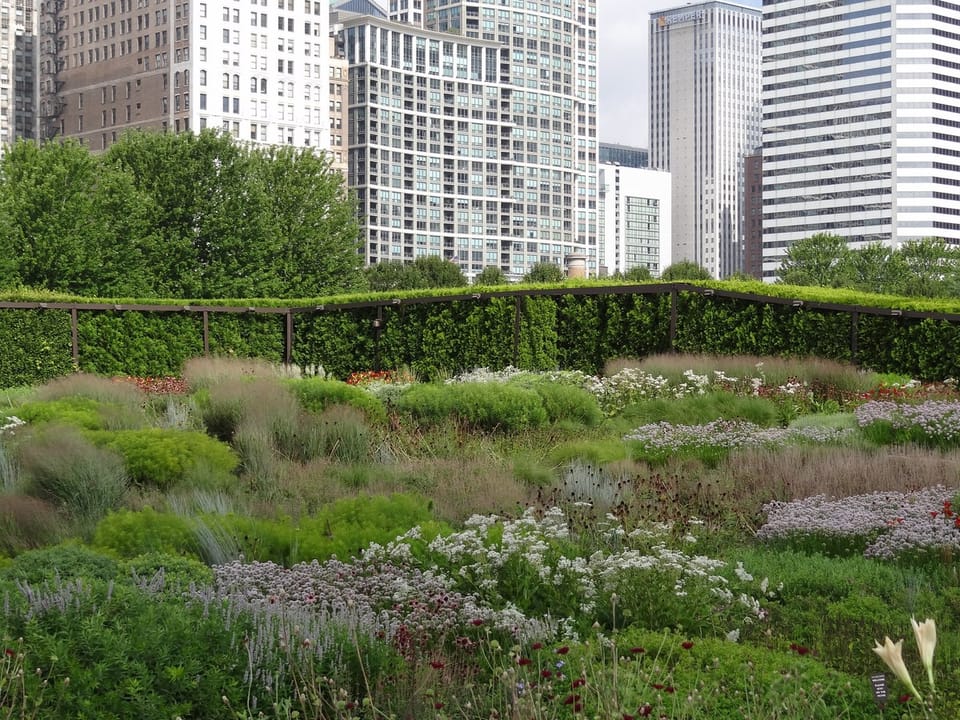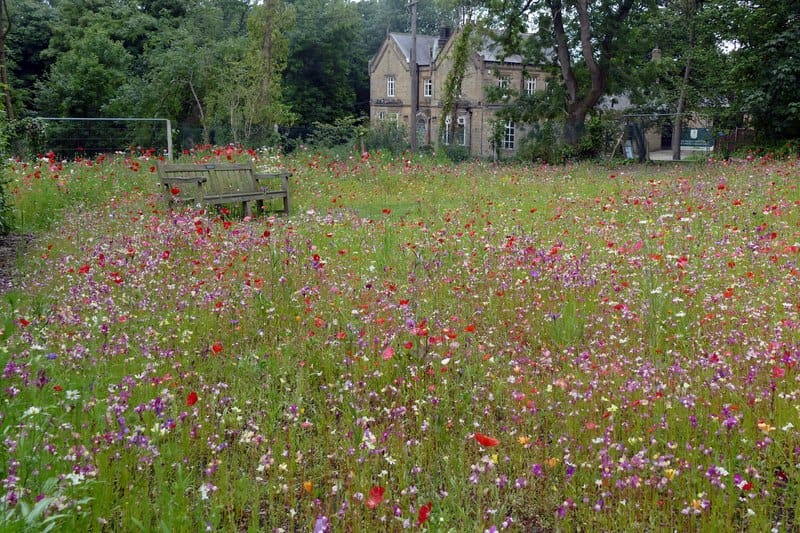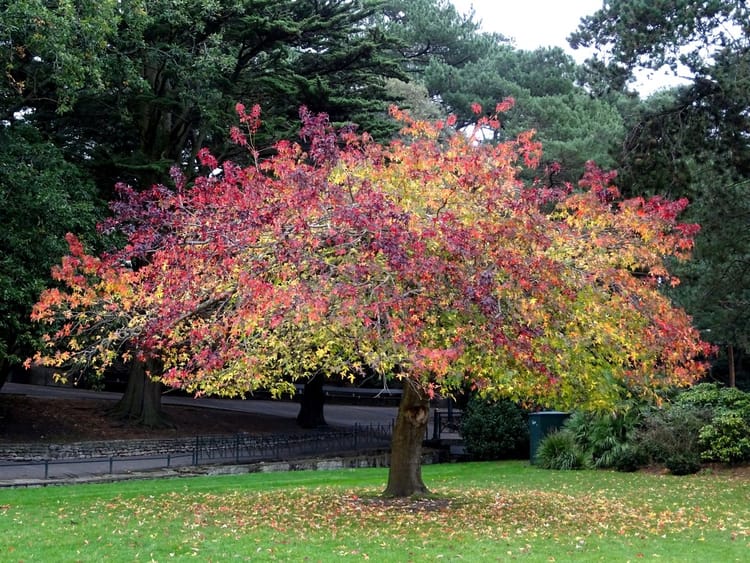Matrix Gardening

Matrix Gardening, also known as Matrix Planting, Wildscaping, or Modular Planting, is a modern technique for designing sustainable gardens that aims to emulate natural landscapes.
The traditional approach to gardening is to clear the land, amend the soil and use planting plans designed on aesthetic values. Maintenance of gardens is then centred on protecting that desired look and feel.
Matrix gardening works in a very different way, where nature is the driving force behind the design and the garden manages itself. You might find this hard to imagine - when letting land grow naturally you would normally expect nothing but weeds and invasive grasses. To understand this better think about how meadows naturally manage themselves. Weeds heavily infiltrate our urban gardens because the native plants and their natural support system in the soil are no longer there, allowing invasive plants to take over. Matrix gardening is an approach to recreate the native plant environment by establishing an ecosystem that mimics natural meadows and woodlands.

Origins of Matrix Gardening
In the aftermath of World War II, many countries in Europe needed to rapidly rebuild their bombed out cities. In Germany, city planners were looking for ways to rebuild parkland that would require little maintenance. Planting mixes of self-seeding plants were created and organised into modular groupings. Plants with similar needs were grouped to form a cooperative ecosystem that could sustain itself on rainwater and suppress weeds.
In addition to rebuilding parkland, matrix plant mixes were used to quickly establish temporary green spaces to help hold down dust in the most bombed-out areas. In 1960s East Berlin, a campaign called "Aktion Wildgras" sought to create temporary ground cover using matrix planting mixes to cover up the scars of war in the urban core.
Piet Oudolf, a Dutch garden designer, later popularised this style by adding aesthetic tweaks to the formulas and creating natural landscapes with a four-season interest. His meadow-like gardens can be experienced at the High Line in New York, and Millennium Park in Chicago. The utilization of matrix planting has become increasingly popular in contemporary garden design. This particular style of planting has captivated American gardeners who are now adopting perennial landscapes inspired by the meadows of the Great American Prairies. As a result, this style of garden design is often referred to as the "New American Style".

High Line Park, New York
While Matrix Gardens can look wild, they do require a lot of planning. In addition to grouping plants based on cultural needs (water, sun, soil, etc.), they need to be arranged in a way that balances each other.
A robust matrix garden is made up of multiple layers of vegetation. This allows sunlight to filter through the layers. Only a small amount of light reaches the ground level, making it suitable only for low-light plants. Deciduous woodlands are excellent examples of such matrices, but gardens need not transform into mini-forests to create effective matrices. Shrubs and perennials can also be used in mixed borders to form useful matrices. It's important to use ground cover even if it may not be visible from a distance to help suppress weed growth. A true matrix garden doesn't require mulch to cover the ground.
Self-seeding plants can help regenerate and sustain landscapes indefinitely. Although they may require close attention initially, a mature matrix garden will need little human intervention and doesn't need fertilizers, pruning, or watering, making it more environmentally friendly than traditional gardens. With time, these natural ecosystems can provide additional benefits such as carbon sequestration, reduction in stormwater runoff, and the creation of habitats for threatened urban wildlife such as butterflies and bees.
Foundations of a Matrix Planting Plan
When creating a matrix planting plan, it's important to keep in mind that you are essentially giving nature a starting point and allowing it to take over from there. To ensure that the planting plan is self-sustaining, it's best to focus on using native plants or those that are similar in climate to the region (without being invasive). Typically, a matrix planting plan will include dozens of plants per square yard, which allows for natural succession as plants die off, requiring minimal human intervention.
Matrix gardens will have a mixture of shallow-rooted grasses and ground covers with deeper-rooted perennials. The foundational layer is made up of grasses or sedges that do not have deep roots. Perennials with tap roots or more extensive root systems are paired with these foundational plants. A garden designer using matrix planting will come up with companion plantings that play well together in a tight space but do not compete with each other. A good starting ratio for this layer is 50:50 grasses to perennials. Once this layer is determined, then the architectural plantings of trees and large shrubs can be added in. In some ways, this is the opposite of how natural gardens are traditionally planned, with ground cover and filler plants being added in to fill the gaps in a design that is mostly focused on the structural plants.
To create such tightly spaced planting plans, the plant materials should be started with plugs and seeds, rather than larger pots. It can take at least one year for the garden to get established and it will need to be closely monitored to give supplemental watering and ensure weeds do not take over. Once the garden is established, the weeds should have a harder time getting started as the ground will be in dense shade. After establishment, a successful matrix garden just needs the occasional thinning out of any plants that are dominating an area.
When designing a matrix planting plan, remember that occupation of space is the essential quality of a plant matrix. Matrix planting is inspired by natural plant communities but is not meant to be an imitation of it.





